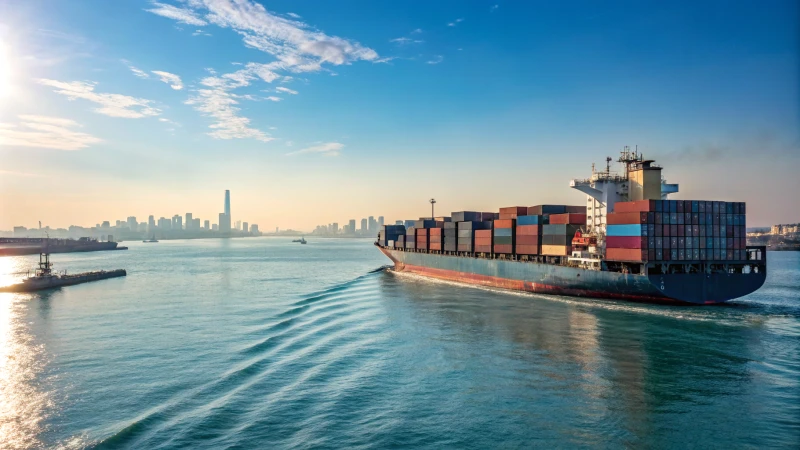I remember my first time trying to ship from China to Hungary. It felt like a huge puzzle with missing pieces, but I quickly learned the ropes.
Shipping from China to Hungary requires choosing the right method, preparing accurate documents, and understanding customs. Options include air freight for speed, sea freight for savings, and express couriers for smaller loads, each with its own perks and considerations.
When I started, the maze of shipping methods was overwhelming. Air freight seemed swift but pricey, while sea freight offered savings at a leisurely pace. Express couriers were perfect for smaller, urgent shipments. Diving into the nitty-gritty of each option, I realized how crucial it was to align my choice with my needs.
Then came the paperwork—an intimidating stack of customs forms and documentation. But as I became familiar with these processes, they transformed from daunting tasks into manageable steps. I discovered tips and tricks along the way to streamline costs and make this whole adventure a little less taxing. Whether you’re just dipping your toes into international trade or are a seasoned pro, these insights can help simplify your shipping journey.
Air freight is the fastest shipping method from China to Hungary.True
Air freight offers the quickest transit times compared to sea or courier.
Sea freight is more expensive than air freight for shipping.False
Sea freight is generally cheaper than air freight due to larger volume capacity.
What Are the Best Shipping Methods from China to Hungary?
Navigating the logistics of shipping from China to Hungary feels like solving a giant puzzle, doesn’t it?
The best shipping methods from China to Hungary hinge on priorities like speed, cost, and shipment size. Air freight provides fast delivery, sea freight is budget-friendly for large loads, and express couriers are perfect for small packages.
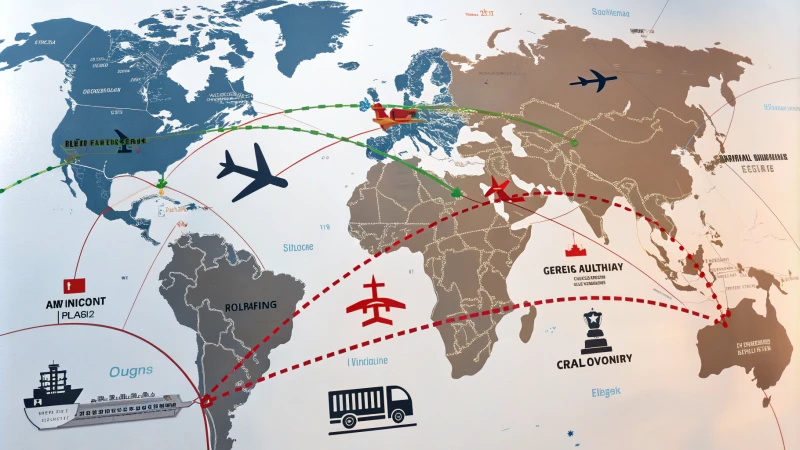
I remember the first time I faced the daunting task of choosing a shipping method for my business. It felt overwhelming at first, but understanding the ins and outs of each option made all the difference.
Air Freight: Speed and Reliability
If you’ve ever found yourself in a pinch needing goods urgently, you’ll appreciate air freight. It's incredibly fast—think 5-7 days! Sure, it's on the pricier side, but when I shipped high-value electronics that needed to be on shelves quickly, this was a lifesaver.
Benefits:
- Swift delivery times
- High security with minimal damage risk
- Detailed tracking to keep tabs on your shipment
Consider air freight if your shipment demands rapid transit and reliable handling.
Sea Freight: Economical for Bulk Shipments
Now, if you've got large quantities and can afford to wait, sea freight is your buddy. It might take 30-40 days, but the savings are significant. I often use this method for less urgent shipments—my wallet thanks me every time!
| Pros | Cons |
|---|---|
| Lower costs for large shipments | Longer transit times |
| Ideal for non-urgent goods | More complex customs procedures |
Choose sea freight if cost efficiency outweighs the need for speed.
Express Courier Services: Swift and Convenient
For those smaller, urgent packages, express couriers like DHL or FedEx are fantastic. I love their convenience—they make shipping easy with door-to-door service in just 3-5 days.
Why Opt for Express Services?
- Fastest delivery for small packages
- Simplified customs clearance
- Convenient pickup and delivery options
Express courier services provide quick delivery for smaller parcels with simplified customs processes1.
Rail Freight: The Balanced Alternative
Rail freight is a happy medium between air and sea. It’s reasonably priced and takes about 15-20 days. Perfect for when you don’t need lightning-fast delivery but want to avoid hefty air freight costs.
| Features | Details |
|---|---|
| Moderate speed | Faster than sea, slower than air |
| Cost-effective | Cheaper than air freight |
| Reliable schedules | Less weather-dependent |
Consider rail freight if you seek a balance between cost and speed.
Choosing the Right Method: Key Considerations
When I choose a shipping method, I weigh these crucial factors:
- Urgency: How soon do I need the goods?
- Budget: What’s my budget for shipping?
- Size: How large is the shipment?
nFor more detailed insights on shipping costs2, I often consult experts or use online calculators to compare options. It’s essential that my choice aligns with my logistical needs and budget constraints.
Air freight is the fastest shipping method from China to Hungary.True
Air freight takes 5-7 days, making it the quickest option.
Sea freight is ideal for urgent shipments from China to Hungary.False
Sea freight takes 30-40 days, suitable for non-urgent goods.
How Do Customs and Import Duties Work in Hungary?
Ever found yourself tangled in the web of customs and import duties in Hungary? I have, and it's quite the adventure!
Customs duties in Hungary involve a mix of VAT and specific tariffs that depend on the type of goods. As an importer, I've learned that having the right documentation, paying the necessary duties, and staying compliant with customs regulations are key to clearing shipments smoothly.
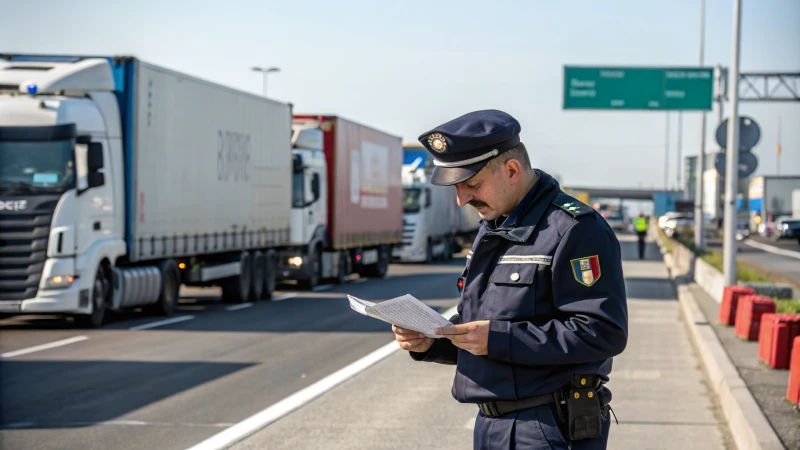
Understanding VAT and Tariffs in Hungary
When I first started importing goods into Hungary, wrapping my head around VAT and tariffs was like navigating a maze. With Hungary's Value Added Tax (VAT)3 at a hefty 27%—one of the EU's highest—it was quite an eye-opener. This tax applies to most imports, so knowing your Harmonized System4 classification is crucial. For instance, electronics might not have the same duty rate as textiles, which keeps things interesting!
Preparing Customs Documentation
I quickly learned that thorough documentation is your best friend when it comes to customs clearance in Hungary. Imagine my relief when I finally got the hang of assembling the commercial invoice, bill of lading, packing list, and certificate of origin. These documents aren't just paperwork—they're the keys to ensuring customs understands your shipment's value and purpose.
| Document | Purpose |
|---|---|
| Commercial Invoice | Details of the transaction and goods value |
| Bill of Lading | Proof of shipment and receipt by the carrier |
| Packing List | Lists the contents of each package in detail |
| Certificate of Origin | Certifies where the goods were manufactured |
Steps to Efficient Customs Clearance
Over time, I developed a checklist to make customs clearance less daunting:
- Choose a Reliable Shipping Carrier: Partner with carriers who know Hungarian imports inside out.
- Documentation: Get those papers ready and double-check for accuracy.
- Customs Declaration: Be precise about your goods’ value and classification.
- Pay Taxes and Duties: Don't forget to calculate and pay VAT and tariffs promptly.
By following these steps, I've minimized delays and kept my operations compliant with Hungarian customs rules. Seeking expert advice from freight services can also be incredibly helpful, especially if you need detailed guidance on customs documentation5.
Additional Considerations for Importers
While VAT and duties are significant, I've also had to navigate non-tariff barriers like quotas and certifications. Keeping up-to-date with changes in trade policies is crucial, and engaging with local experts or trade associations has been a game-changer for me. These connections offer insights into market dynamics that are invaluable.
For more details on import regulations6 specific to Hungary, I've found that resources from trade associations are a treasure trove of information.
Hungary has the highest VAT rate in the EU.True
Hungary's VAT rate is 27%, which is the highest in the EU.
All goods imported to Hungary are duty-free.False
Import duties depend on the product classification, not all are duty-free.
What Documentation is Required for Shipping to Hungary?
Shipping goods internationally can feel like solving a complex puzzle, especially when it comes to the paperwork involved. If you're shipping to Hungary, here's how to make it a breeze.
When shipping to Hungary, you'll need a commercial invoice, packing list, bill of lading, and any necessary import licenses or permits. Having these documents ready helps you sail through customs without a hitch.
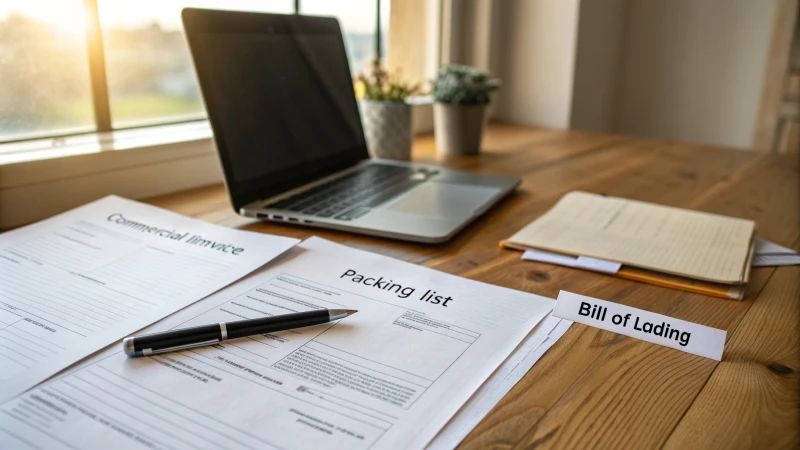
Key Documents for Shipping to Hungary
I remember the first time I had to ship goods to Hungary—I felt overwhelmed by the paperwork. But once I broke it down, it became much simpler. Here’s what you’ll need:
Commercial Invoice: Think of this as the backbone of your shipment. It details everything about your goods—what they are, how much they’re worth, and who’s buying them. The first time I filled one out, I made sure to double-check every detail to avoid any issues.
Packing List: This isn’t just a list; it’s your shipment’s story. It tells customs exactly what’s inside each box—the weight, dimensions, and even how it’s packed. My tip? Make it as clear and detailed as possible.
| Document | Purpose |
|---|---|
| Commercial Invoice | Details goods' value and description |
| Packing List | Itemized details of shipment's contents |
| Bill of Lading | Contract between shipper and carrier |
Bill of Lading: This is the official handshake between you and your carrier—a contract that outlines everything about your shipment. I always keep a copy handy until the goods are safely delivered.
Import Licenses/Permits: Sometimes, you might need specific licenses for certain products. The first time I encountered this, it took some research but saved me from potential headaches later.
Additional Considerations
- Customs Declaration Forms: Don’t overlook these—they’re crucial for declaring what you’re shipping. Filling them out correctly can prevent delays.
- Certificate of Origin: If your goods are part of a trade agreement, this certificate proves where they were made.
Before sending anything off, I always double-check if there are additional documents needed for specific items. Staying informed about customs regulations7 is key to ensuring everything goes smoothly. Trust me, being prepared means your goods arrive on time without any hiccups.
A commercial invoice is required for shipping to Hungary.True
A commercial invoice details goods' value and description, needed for customs.
A packing list is optional when shipping to Hungary.False
A packing list is necessary to provide itemized shipment details like weight.
How Can You Minimize Shipping Costs from China?
Have you ever felt overwhelmed by the complexity of shipping from China? I certainly have, especially when trying to keep those pesky costs under control.
To minimize shipping costs from China, I recommend selecting the most suitable shipping method, negotiating with several freight forwarders, and optimizing your packaging. Consolidating shipments and staying informed about tariffs can also prevent unexpected expenses.
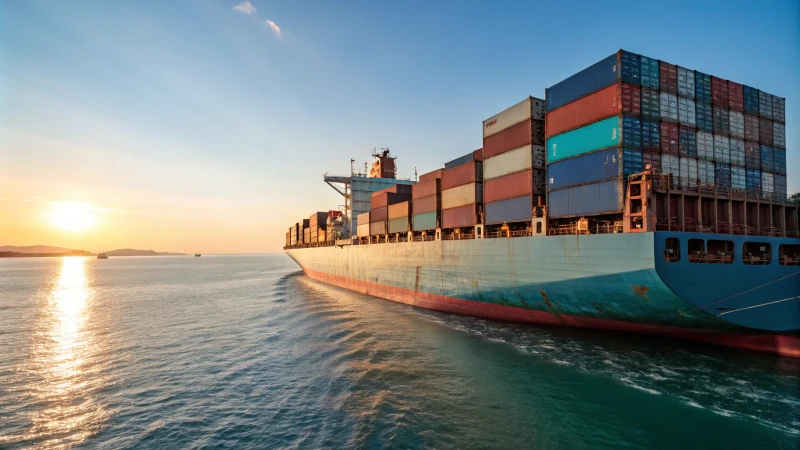
Choose the Right Shipping Method
When I first started importing, I found that each shipping method had its own quirks and costs. Air freight is a lifesaver if you need speed, but if you're like me, always looking for the most cost-effective solution, sea freight is usually your best bet for larger volumes.
| Method | Pros | Cons |
|---|---|---|
| Air Freight8 | Fast and reliable | Expensive for large volumes |
| Sea Freight | Cost-effective for bulk | Slower delivery times |
| Express Courier | Ideal for small shipments | Higher cost per unit |
| Rail Freight | Affordable, moderate speed | Limited route availability |
Negotiate with Multiple Freight Forwarders
I once made the mistake of sticking with one freight forwarder out of convenience. Big mistake! By reaching out to multiple freight forwarders9, you can play them against each other to get the best deal. It's amazing how much you can save just by comparing quotes.
Optimize Your Packaging
Packaging was another eye-opener for me. Efficient packaging isn't just about protecting your goods; it's about cutting costs too. I switched to lightweight and compact designs and saw a significant reduction in dimensional weight charges. Plus, considering biodegradable packaging10 isn't just good for the planet, it can also be a savvy financial move.
Consolidate Shipments
Combining smaller shipments into one larger load was a game-changer for me. It reduced my per-unit costs and made better use of container space. It's like putting together a jigsaw puzzle—you just need to figure out how the pieces fit best.
Stay Updated on Tariffs and Regulations
Nothing stings more than unexpected fees due to tariff changes. I learned the hard way that staying updated on current regulations is crucial. Consulting with a customs broker11 saved me from many headaches and financial surprises.
Implementing these strategies has streamlined my shipping process and significantly reduced my logistics costs. It's all about making your import activities as sustainable and profitable as possible.
Sea freight is the fastest shipping method from China.False
Sea freight is slower but more economical for bulk shipments.
Consolidating shipments can reduce per-unit costs.True
Combining smaller shipments into one larger shipment lowers handling fees.
What Are the Key Steps in the Shipping Process?
Shipping can feel like a jigsaw puzzle, where every piece must fit perfectly to complete the picture.
Navigating the shipping process requires a few key steps: choosing a carrier, sorting out paperwork, packaging, customs, taxes, and finally, delivery. Each step demands attention to detail to ensure everything arrives safely and on time.
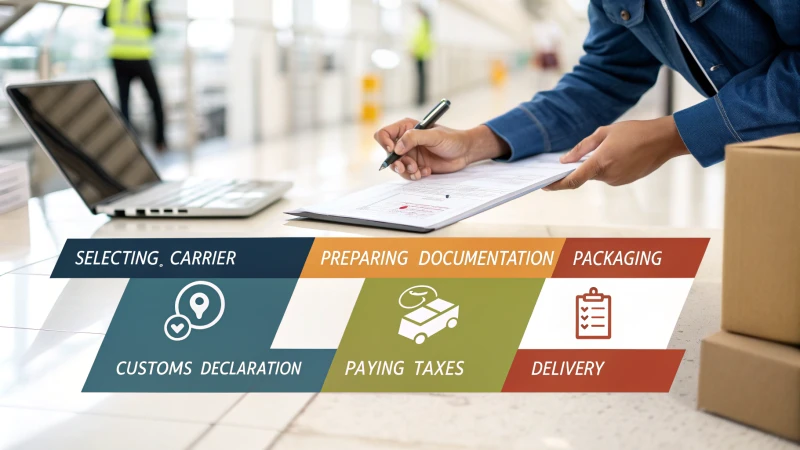
Selecting a Shipping Carrier
Choosing the right shipping carrier12 isn't just about price—it's like picking a travel buddy for your goods. I remember once opting for air freight thinking it was the safest bet for my electronics, only to realize the hefty cost wasn’t justified by the urgency. Next time, I went with sea freight—slower but just right for my budget.
| Shipping Method | Speed | Cost |
|---|---|---|
| Air Freight | Fast | High |
| Sea Freight | Slow | Moderate |
| Express Courier | Fast | High |
| Rail Freight | Moderate | Moderate |
Preparing Documentation
The paperwork can feel like a maze, but getting it right is essential. I once missed adding a bill of lading13 and ended up delaying an entire shipment. Now, I triple-check every document—commercial invoices and packing lists included—to avoid such hiccups.
Packaging and Labeling
Good packaging is like sending your goods off in armor. I learned this the hard way when a shipment arrived with damaged items due to poor packaging. Since then, I've stuck to standardized packaging and ensured every box is labeled correctly to meet regulations.
Customs Declaration
Customs can be daunting, but honesty is the best policy. Misdeclaring goods might seem tempting to save on duties, but it can lead to fines—or worse. I've come to rely on accurate customs forms14 and clear declarations to ensure smooth sailing.
Paying Taxes and Duties
Calculating taxes and duties can be tricky; it's like trying to hit a moving target. I've found consulting with experts helps me avoid surprises and ensures I'm paying what's due for each shipment's destination.
Delivery
Coordinating delivery is the final piece of the puzzle. I keep my clients informed of delivery times and any possible delays to ensure they're never left in the dark. It’s the little things that keep customers happy and coming back for more.
Each of these steps is crucial in ensuring my shipping operations run smoothly. By tackling them with care, I minimize errors and boost my supply chain efficiency, keeping my business—and my customers—thriving.
Air freight is the most economical shipping method.False
Air freight is fast but costly, not the most economical option.
Incorrect documentation can delay shipments.True
Proper documentation prevents delays and penalties during shipping.
How Does Choosing the Right Carrier Affect My Shipment?
Ever wondered how the choice of a shipping carrier can make or break your business? It's not just about moving goods—it's about ensuring every aspect of your delivery runs smoothly.
Choosing the right carrier for my shipments is crucial. It affects everything from delivery speed and cost to reliability and customer satisfaction. The right carrier ensures timely delivery, protects product integrity, and aligns with my business objectives.
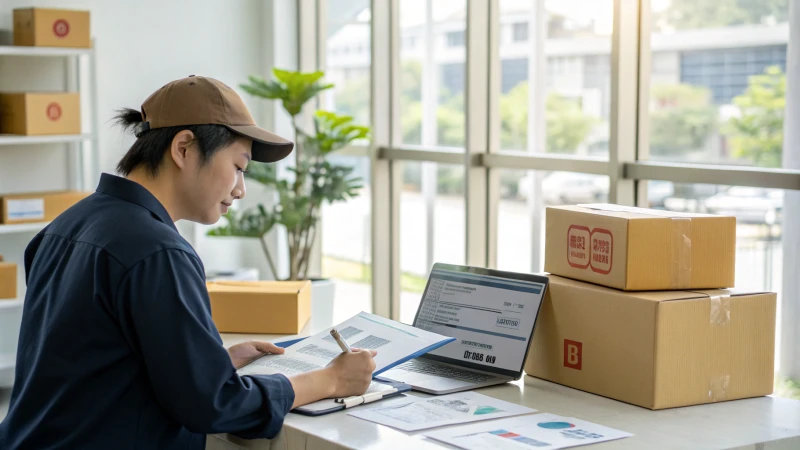
Speed and Reliability
I remember once trusting a new carrier for an urgent shipment. I thought, "What's the harm?" But then, delays started piling up, and I could feel the anxiety creeping in as customer trust slipped through my fingers. That's when I learned the hard way that a dependable carrier is key to keeping my delivery schedule15 intact. Choosing a reliable one helps me maintain customer satisfaction and avoid those sleepless nights.
Cost Efficiency
Balancing cost with quality is always a juggling act in my business. Take air freight, for example—fast but pricey. I once did a cost analysis with a table like this:
| Method | Speed | Cost |
|---|---|---|
| Air Freight | Fast | High |
| Sea Freight | Slow | Low |
| Rail Freight | Medium | Moderate |
This comparison really helped me see where I could save without sacrificing too much speed.
Customization and Flexibility
Imagine needing a special delivery at an odd hour, or having products that require unique packaging. Flexible carriers can offer these tailored solutions. I always assess how well a carrier's services16 align with my business needs, ensuring they can handle any logistical demands that come my way.
Customer Support
Once, a shipment ran into trouble, and I was at my wit's end. That's when responsive customer support became invaluable. It taught me to always check the customer service reputation17 of potential carriers. Having someone reliable to turn to can make all the difference.
Security and Compliance
Shipping internationally can be a maze of regulations. I've been caught off-guard by customs issues before, so now I only work with carriers who understand customs regulations18 inside out. This ensures smooth sailing for my shipments, avoiding legal headaches or fines.
Reliable carriers prevent shipment delays.True
Dependable carriers ensure shipments are timely, maintaining trust.
Air freight is cheaper than sea freight.False
Air freight is faster but more expensive compared to sea freight.
Conclusion
Shipping from China to Hungary involves selecting the right method, preparing documentation, understanding customs duties, and ensuring timely delivery while managing costs effectively.
-
Discover how express courier services can streamline customs clearance, making international shipping faster and easier. ↩
-
Learn to accurately calculate shipping costs from China to Hungary using online calculators or expert advice for budget-friendly logistics. ↩
-
Understanding VAT rates is crucial for budgeting import costs effectively. ↩
-
Learn how product classification affects duty rates for better planning. ↩
-
Ensure you have all necessary documents to avoid shipment delays. ↩
-
Identify potential trade barriers to streamline your import process. ↩
-
Stay updated on customs rules to ensure smooth shipping processes. ↩
-
Understand the benefits and drawbacks of using air freight to determine if it suits your shipping needs. ↩
-
Discover reputable freight forwarders who offer competitive rates for shipping from China. ↩
-
Learn how biodegradable packaging can be a cost-effective and eco-friendly solution for your shipments. ↩
-
Find experienced customs brokers to help navigate complex tariff regulations effectively. ↩
-
Discover the factors that impact carrier selection for international shipments to enhance decision-making. ↩
-
Learn about the bill of lading's role in shipping and why it's essential for documentation. ↩
-
Understand the process of completing customs forms to avoid shipping delays or penalties. ↩
-
Discover how choosing a reliable carrier ensures timely deliveries and maintains customer satisfaction. ↩
-
Learn how flexible carriers can customize services to better meet your unique shipping needs. ↩
-
Check how different carriers are rated for their customer support services to choose the best one. ↩
-
Explore how carriers manage customs compliance to ensure smooth international shipping operations. ↩

